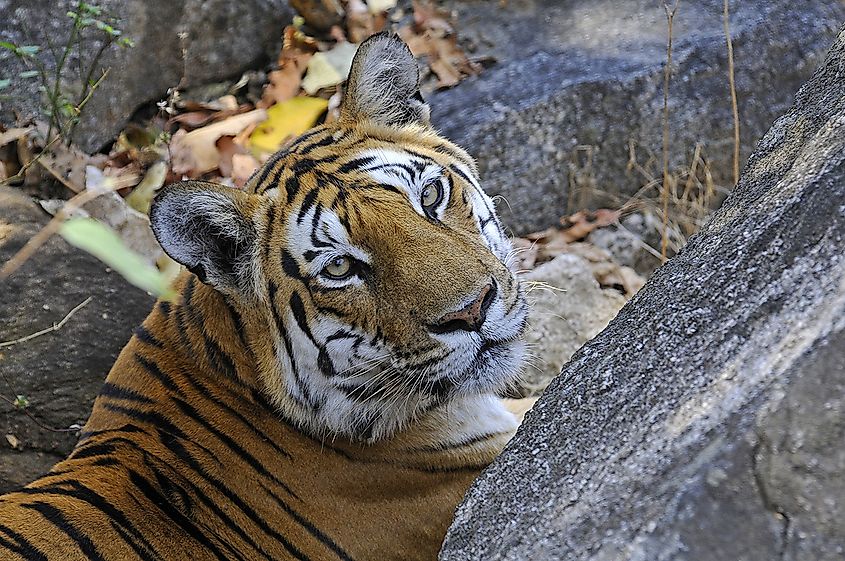
Range and Habitat of The Tiger
Sadly, despite the huge popularity of the tiger (Panthera tigris), the species is now on the brink. Only a century ago, the tiger ranged across Asia from Turkey in the west to the eastern coast of Russia. Today, the species is found in only 6% of its historical range, having disappeared from central and southwest Asia and large parts of southeast and east Asia.
Currently, as per IUCN, only eight range countries (instead of 13 as believed in 2006) host breeding tiger populations, with India having nearly 75% of the world’s wild tiger population. Nepal, Bhutan, Bangladesh, Malaysia, Indonesia, Thailand, and Russia are the other countries with breeding populations.
Forests of tropical Asia with sufficient prey species, especially large ungulates, are ideal tiger habitats. The tiger is also found in grasslands and shrublands with a stable prey population. Tiger presence has been recorded at a maximum elevation of around 4,500 m in Bhutan.
Tiger Subspecies
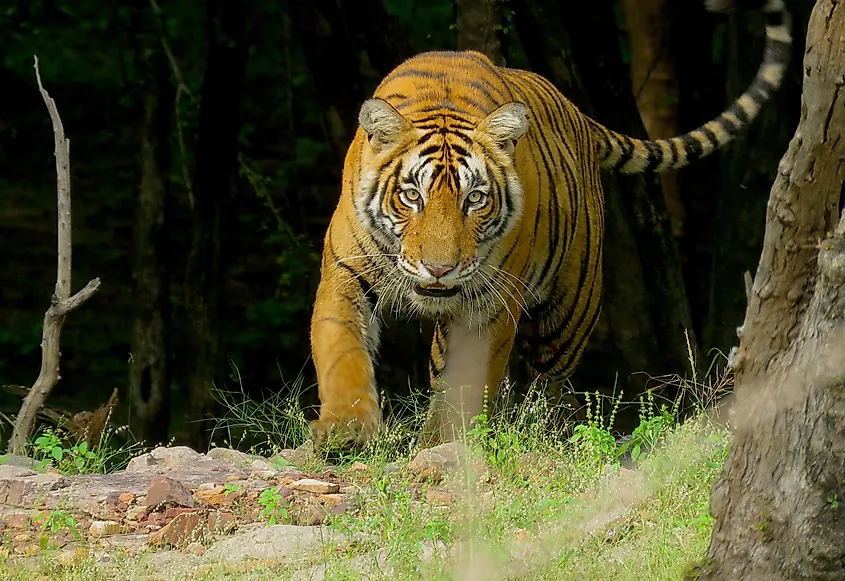
The exact number of tiger subspecies is debatable. According to some sources, there are two subspecies, the continental tiger (Panthera tigris tigris) found in mainland Asia and the Sunda tiger (Panthera tigris sondaica) of Indonesia’s Sumatra Island.
Other sources claim that there are six extant tiger subspecies – the Bengal tiger, the Indochinese tiger, the Siberian tiger, the South China tiger, the Malayan tiger, and the Sumatran tiger. According to this classification, three other subspecies, the Javan, Bali, and Caspian tigers, have gone extinct.
Food Habits Of The Tiger

The mighty tiger is one perfect hunter. Not only does the tiger feed on various species of deer (like sambar, barasingha, spotted deer, etc.) and wild boars, but there are also records of the big cat bringing down gigantic gaurs, wild buffaloes, rhinos, and even elephants! But the tiger is also not too fussy about its prey size. An opportunistic predator, it also feeds on smaller animals like birds, rodents, reptiles, fish, amphibians, etc. On rare occasions, the tiger might kill or even consume competitive carnivores like dholes, leopards, crocodiles, striped hyenas,; etc.

The tiger is an ambush hunter. It lurks in the bushes or grasses, waiting for its prey. Its striped skin camouflages it perfectly for its prey like deer who, unlike humans, are color blind to red-orange tones. A short leap or sprint out of its hiding takes the tiger to its target. It usually grabs the prey by the neck severing the spinal cord with its powerful bite or by the throat (for larger prey), killing it by strangulation. The perfect killing machine is then ready to relish its hard-earned meal.
Behavior And Reproduction
The tiger is a solitary creature that maintains its exclusive territory. Females usually establish their territory near their mother while males venture out further. The size of tiger territory varies according to prey availability, geographic area, and sex of the tiger. For example, in Nepal, a male tiger can live in 20 sq. km, while one in the harsh climes of Siberia needs a territory of around 400 sq. km to survive as prey is hard to find in such an extreme environment.
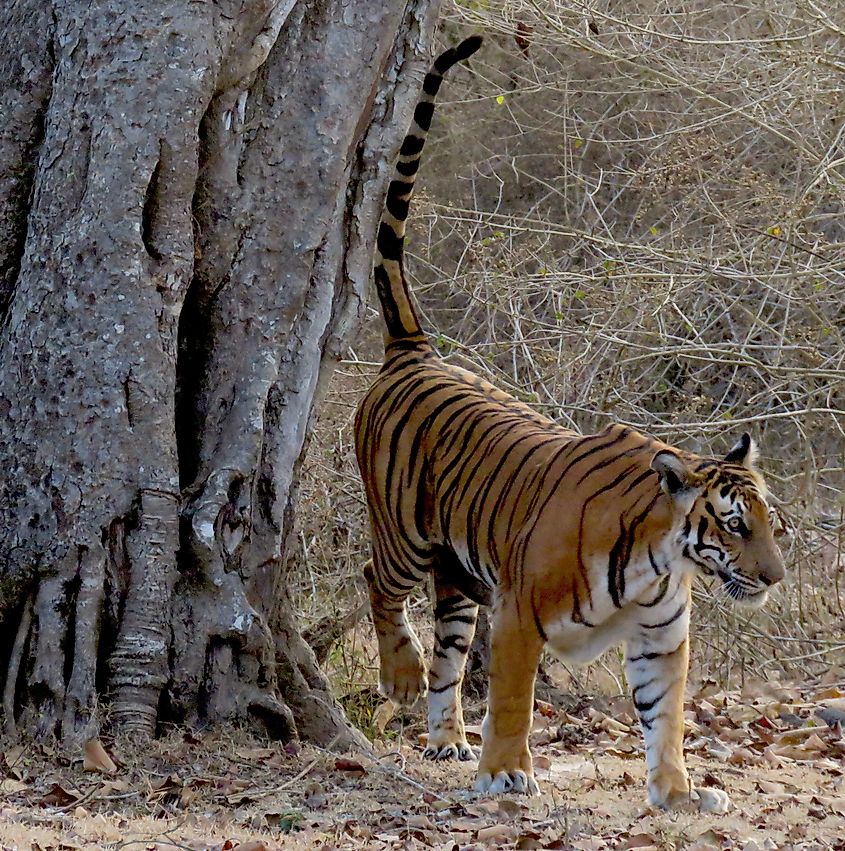
The tiger uses scrape marks using its claws and scent marking through its urine and feces to maintain its territory or find a mate. Chemical compounds in these excretions act as signaling compounds revealing important messages about an individual’s status like a female in heat. The tiger also uses various forms of vocalizations like roars, chuffing, hisses, growls, moans, etc., to communicate its different moods.
Not much of a climber, but the tiger is an excellent swimmer who loves spending time cooling off in the water.
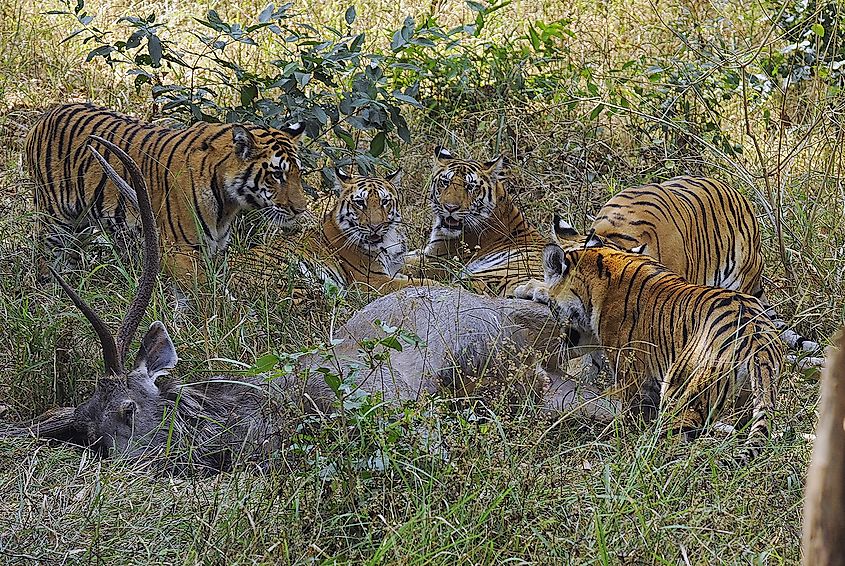
Tiger-tiger interactions are not too common except during mating and while raising cubs. Males often fight each other (sometimes to death) to earn mating rights over a female. Males also engage in battle over territorial rights. Females raise cubs and are very protective mothers, always on the alert regarding the safety of their cubs. Tigers, especially related ones, are known to share meals. On certain occasions, male tigers also participate in rearing the cubs.
Following mating and a gestation period of around 100 days, female tigers give birth to a litter of usually around 2 to 3 cubs (sometimes more). They start weaning at around six months of age and learn hunting skills from their mother as they grow. By about 2.5 years, they leave their mother to establish their own territories. Adult males and females are sexually mature at around 3 to 4 years and 4 to 5 years, respectively.
Importance of The Tiger
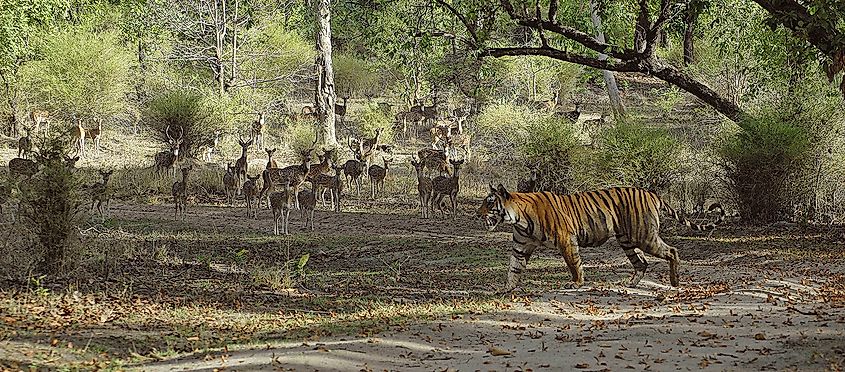
The tiger, an umbrella species, is responsible for the long-term survival of all species living in its habitat. As a charismatic species, the tiger has grabbed the world’s attention. Hence, collecting funds and support for tiger conservation is easier than other species’ conservation. This advantage has allowed conservationists to use the tiger as a flagship species to conserve vast tracts of habitat where it reigns. Protecting such habitats that serve as tiger territory immediately safeguards all other species calling this habitat home.
As a keystone species, protecting the tiger also has significant positive effects on the ecosystem. It is the top predator that keeps the populations of its prey species in check. Hence, its stable populations are necessary for a healthy ecosystem.
Tigers are thus invaluable to humans. Tiger conservation helps protect what little greenery is left in the countries where the species occurs. Such protected areas provide ecosystem services worth millions. The benefits obtained from such ecosystems are not only experienced by the tiger-range countries but also globally.
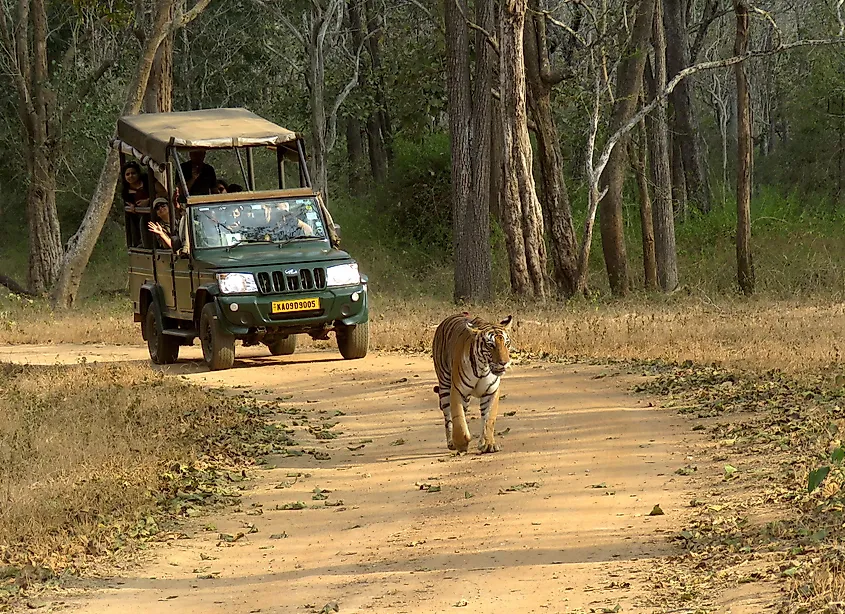
Tiger tourism also is a boon to many employed in the business. The aura of the tiger attracts tourists from far and wide to destinations where tigers roam free. Thus, multiple countries benefit from the income earned through tiger tourism.
Threats To The Tiger
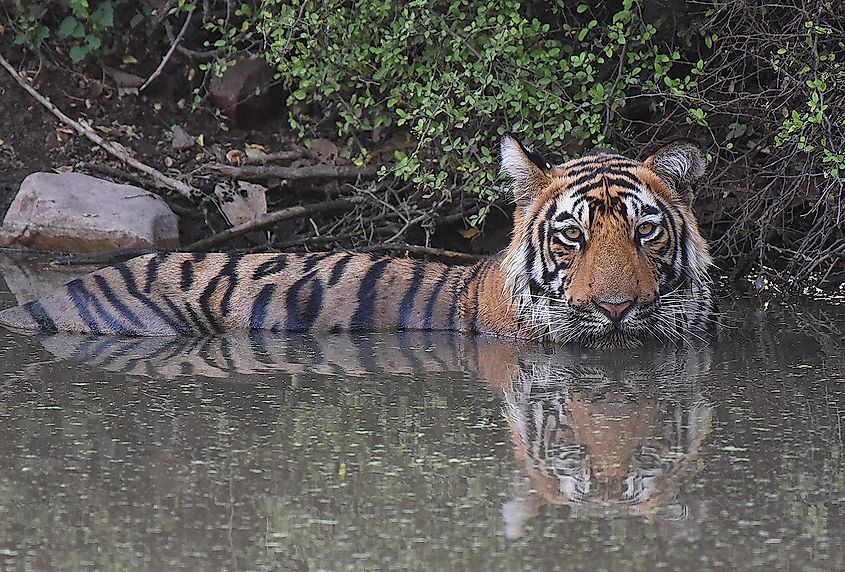
According to the IUCN Red List, the tiger is an “Endangered” species. Poaching and habitat loss/fragmentation/degradation are the two biggest threats to the tiger. In the past, tiger numbers were severely reduced due to the lack of laws and rampant hunting for pleasure. Today, tigers are poached for the illegal trade in tiger body parts to cater to the black market demand in China and some Southeast Asian countries like Vietnam.
Across vast parts of the tiger range, the landscape has also been severely modified to cater to human needs, leaving little space for these wild cats and their prey species. Roads and railways have cut through prime tiger habitats, fragmenting them and making tigers susceptible to accidental deaths. In many places, tiger habitats now exist as islands without proper corridors connecting them to other such habitats, preventing a healthy mix of tiger populations and gene flow.
The encroachment of human settlements into tiger habitats has also increased human-tiger negative interactions, resulting in the loss of lives on either side.
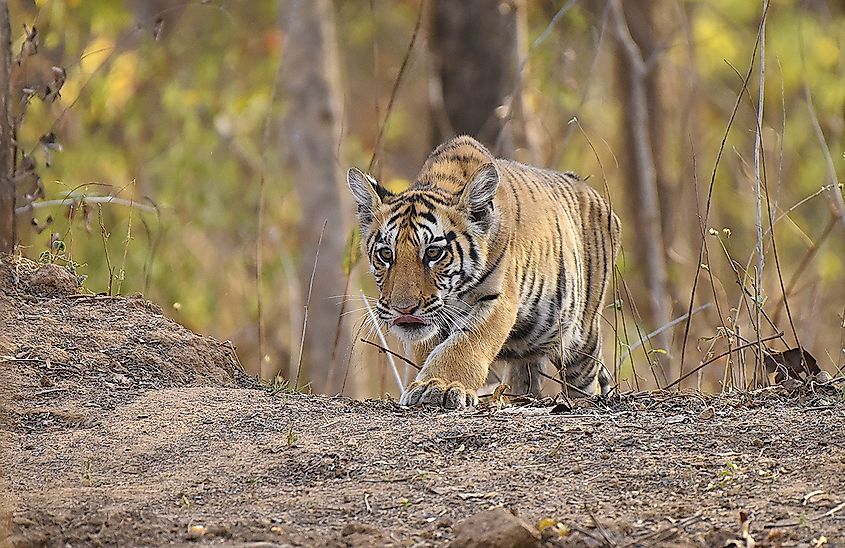
Although the threats to the tiger are many, there is still hope left. Countries like India have shown that the tiger can be saved with will and dedication. India nearly lost its tigers following a period of indiscriminate hunting of the species during the British colonial rule. However, stringent wildlife protection laws and policies, and the cultural inclination of the people to save tigers, have helped the country recover its tiger numbers to around 3,000 tigers in 2018 from only 1,411 in 2006.
The tiger is a symbol of a stable future. It represents rich and viable ecosystems. If the tiger survives, humans will have a secure future with fresh air, adequate clean water, and food supply. Hence, successful tiger conservation is one of the urgent needs of the planet today.



 Users Today : 18
Users Today : 18 Total views : 665022
Total views : 665022